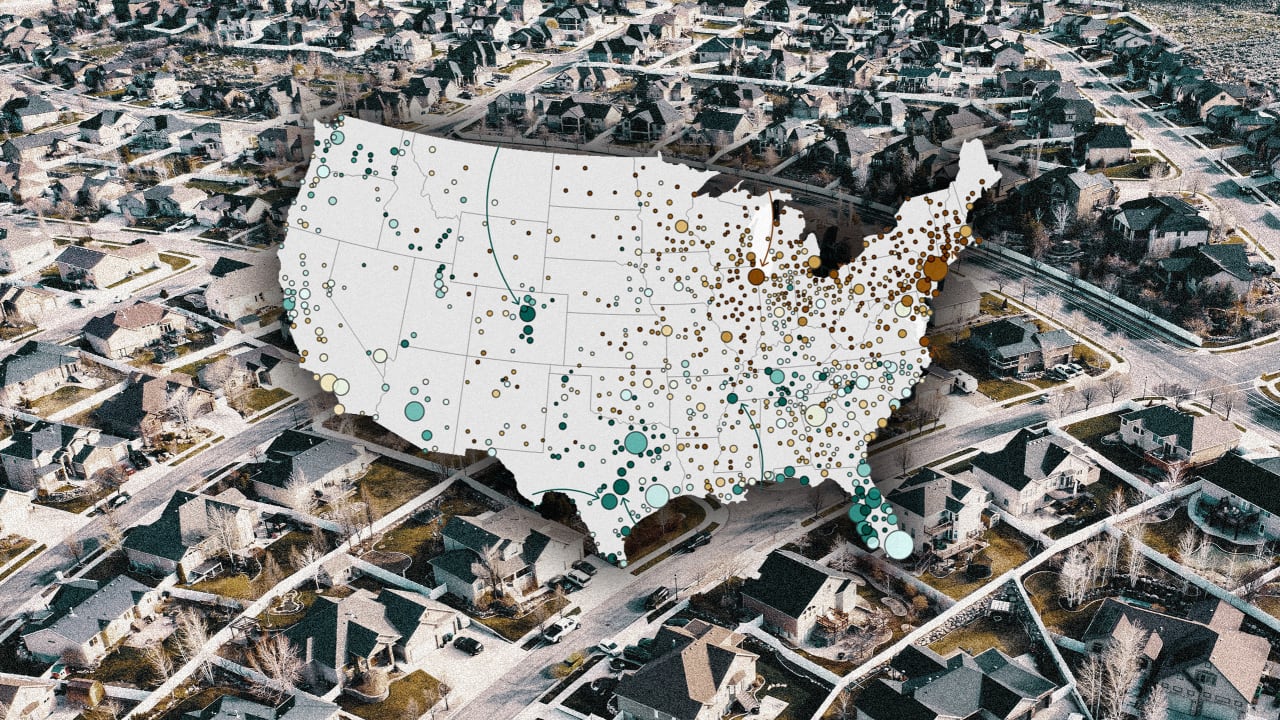CEO of an $11 billion builder empire warns that these housing markets face a short-term oversupply

Want more housing market stories from Lance Lambert’s ResiClub in your inbox? Subscribe to the ResiClub newsletter.
This year’s spring selling season didn’t meet expectations, Toll Brothers CEO Douglas Yearley told a group of institutional investors gathered at Bank of America’s 2025 Housing Symposium earlier this month.
“The spring selling season, which is really a winter selling season, is when most new homes are sold in this country,” Yearley said. “This was not a good spring . . . it still was, overall, a soft spring season.”
Yearley said February marked the spring season low point, with some improvement in March and April—but not enough to call it a rebound.
Regionally, Yearley painted a picture of a highly bifurcated market. The best-performing areas for Toll Brothers include Boston and Northern Virginia, where land is scarce, resale inventory is tight, and competition from large public builders is limited.
“Through the COVID years, you know, the Northeast and Atlantic, all across and down through Northern Virginia, did not fare well, as everybody could go remote and leave—they were chasing the sunshine and chasing a lower cost of living. And so home price appreciation through COVID wasn’t as much in Boston and Northern Virginia because demand wasn’t as strong. Now that has completely flipped, and our strongest corridor is Boston,” Yearley said.
Yearley added: “There’s less competition [in the Northeast]. The big public builders aren’t here. There’s very little land. So when you get the land, it’s gold, and the resale markets are much tighter. I live on the Main Line of Philadelphia, in the suburbs of Philly. There’s no inventory [here]. That’s not true in Texas and Florida and other places where you have a lot of big public builders and a lot of land. So there’s much more supply [in Texas and Florida]. But in the Boston and Northern Virginia corridor, it’s very supply-constrained, and we [Toll Brothers] are doing really well [in the Northeast].”
On the flip side, Toll Brothers—a publicly traded luxury homebuilder with an $11 billion market capitalization—is seeing the most softness in pandemic-era boomtowns across the Sun Belt, where unsold completed spec inventory has surged. Spec homes—short for speculative homes—are built without a buyer lined up, with the builder betting the home will sell once finished.
“On the softer side, you know, Florida inventories are up . . . parts of Texas inventories are up. Phoenix is still adjusting a bit with high inventories. A lot of that inventory for existing homes is builder spec, because all those markets have a lot of big builders there who are committed to a spec strategy,” Yearley said.
Yearley doesn’t think this spec overhang in boomtown areas in Arizona, Florida, and Texas will last forever. He’s already starting to see some homebuilders pull back.
“As many as a third of the overhang on the resale market right now is actually new unsold spec. That’ll clean up [over time] because the builders are starting fewer spec homes in the softer market, and I think that will naturally work its way out,” Yearley said.
Despite near-term softness, Yearley remains bullish on the long-term fundamentals driving housing demand. “We have 4 to 6 million too few homes in this country. We haven’t built enough homes in the last 15 years to come close to satisfying demand,” he said. “The tailwinds for the industry are great, but short-term pressure is real.”
What's Your Reaction?
 Like
0
Like
0
 Dislike
0
Dislike
0
 Love
0
Love
0
 Funny
0
Funny
0
 Angry
0
Angry
0
 Sad
0
Sad
0
 Wow
0
Wow
0































































































